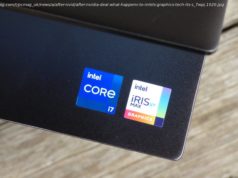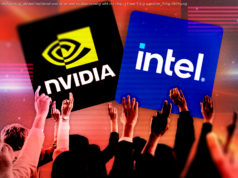The demand driver for 5G may not be AI or VR, but improved carrier business models
At the huge Mobile World Congress (MWC) held this week in Barcelona, there seemed to be a question on the tip of everyone’s tongue regarding the prospects of 5G: What will be 5G’s killer app?
In the past, when a new mobile protocol was introduced, the aim seemed to be to address a perceived need. (Although the predictions have not always been accurate: 3G addressed an anticipated demand for video conferencing that never really materialized.) However, 5G seems somewhat different in that it will be addressing an overall trend of higher efficiency and more bandwidth rather than a specific application demand.
With no clearly targeted demand, it’s understandable why people are wondering what 5G’s killer app might be. In a meeting at the MWC with Julius Robson, the Chief Strategy Officer of the Small Cell Forum, he suggested the killer app for 5G may not come from the usual suspects: artificial intelligence or virtual reality.
“I don’t think it’s so much the killer app that 5G is going to enable, it’s going to be the killer business model,” said Robson. “It will be the ability of an operator to expose their service as a connectivity offer and for other people to come along and monetize that.”
Robson explains that there needs to be a way for someone running a factory to have the option of buying mobile connectivity in another form, something apart from a SIM card. He suggests that it may resemble a business model along the lines of Amazon Kindle in which a user gets a lifelong connectivity deal with a mobile operator for downloading books.
Robson sees that this 5G business model—with the help of small cells, or miniature base stations—will help extract the value hidden in manufacturing settings where the Internet of Things (IoT) promises to allow machines to communicate with each other.
“This is where I see the next big leap in the mobile industry, in its ability to address these vertical industries,” said Robson. “The SIM model is not enough for industry because it doesn’t solve the problem of machine-to-machine communication.”
Robson explains that mobile operators currently have a business model in which they sell SIM cards to users from retail stores. But this model doesn’t really translate for factory operators who can’t walk into these stores and explain they are trying to get their machines to communicate with each other.
The skill level to sell such a product that would work in that environment also doesn’t exist at retail stores. Instead, operators will need more employees who aren’t necessarily RF engineers but are IT savvy.
It is the creation of this new mobile ecosystem, as Robson describes it, that will be the key factor in finally getting mobile connectivity available within factories and enable the kind of machine-to-machine communication required for IoT. This new business model will be the force that propels 5G, according to Robson.
The evolution of small cells to the point where the technology is poised to enable new 5G business models started with femtocells. Femtocells addressed small indoor areas that couldn’t be handled by Wi-Fi networks. Small cells are a scale up from the femtocells concept and are aimed at addressing the small to medium enterprises (SMEs) that are too big for the femtocells and for which a base station would be overkill.
Small cells have been proliferating over the past decade because of their ability to fill this gap between Wi-Fi networks and large mobile base stations. While small cells have helped expand coverage in today’s networks, it’s expected that small cells combined with a new generation of macro network antennas will help enable the so-called “densification” of coverage needed or the applications envisioned in 5G networks, such as industrial IoT and smart cities.
The demand of SMEs is just one of the factors driving densification with small cells, according to Robson. The other key driver is the aim of creating so-called “smart cities” in which these small cells could be installed on lampposts all around a city to improve coverage. This is expected to be a key element in 5G networks.
Small cells are critical to the realization of 5G networks because this new mobile protocol will utilize what is known as the millimeter wave spectrum—that spectrum between 30 and 300 gigahertz. While this will certainly open up more real estate on the radio wave spectrum for the new services expected with 5G, it comes with the problem that these millimeter waves don’t propagate through dense urban environments as well as today’s networks. Today’s 4G networks use bands lower on the radio frequency spectrum, where carrier waves at hundreds of megahertz can pass easily around obstacles and through the air.
“Higher frequencies mean that the coverage area is going to be smaller so you’re going to need more cells if you want to get blanket coverage,” explained Robson. “I think what we at the Small Cell Forum have become good at is a solving this problem of ‘if I’m going to put out a lot more small cells—two times, 10 times as many—I can’t use the same operational process I used before.’”
Robson explains that mobile operators can’t send out highly trained RF engineers to set up the multitude of small cells needed to establish the kind of coverage needed with these higher frequencies. Instead, Robson and the Forum have been developing a more automated process that is no more complicated than setting up a home Wi-Fi router.
Robson added: “With the increased number of cells required to gain the coverage needed for 5G networks, you’re going to have to rethink the way you deploy. We are working on processes that are cheaper and more scalable so that you can train armies of people to go out and do that.”






